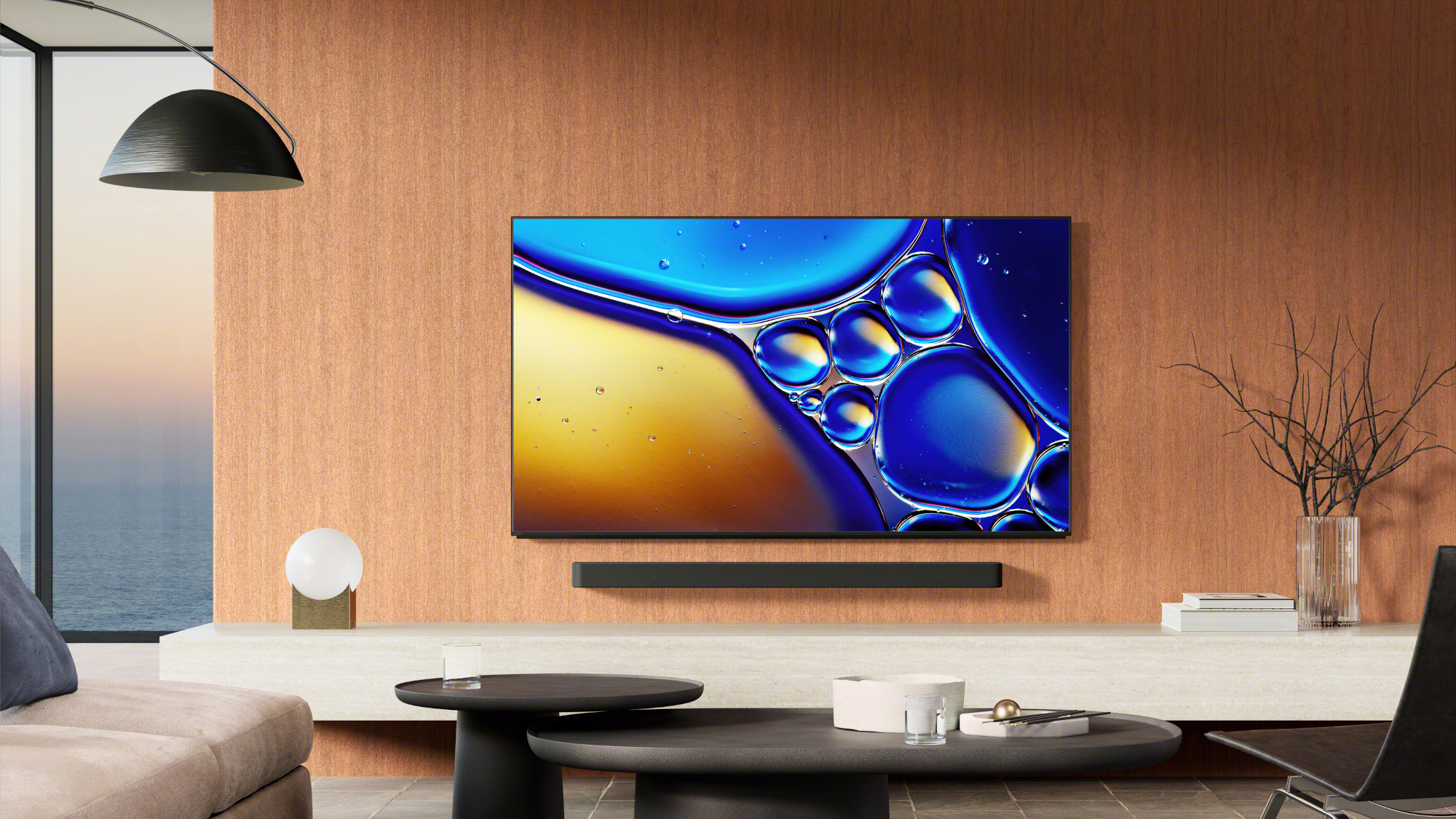The test results for Sony’s top OLED TV of 2025 are in — and I’m blown away by one result in particular
I can't wait to spend more time with this TV

To say I’m excited for the Sony Bravia 8 II is an understatement. As the rather clumsy-sounding name suggests, the Bravia 8 II (that’s “Bravia Eight Mark-Two”) is a follow-up to the brand’s top OLED from last year: the Sony Bravia 8.
However, while the original Bravia 8 made use of a standard OLED panel, its successor leverages a quantum dot-enhanced display for, among other benefits, better color volume.
This puts the Bravia 8 II closer in line with the Sony A95L, the brand’s last quantum dot-equipped OLED TV. And, as it happens, the A95L is one of my favorite TVs of all time (and one of the best TVs ever made).
To understand why I’m so excited about the Bravia 8 II, let’s take a look at its test results compared to the competition. As I’ll explain, one figure in this chart almost knocked me off my feet.
Sony Bravia 8 II test results: how does it stack up?
| Header Cell - Column 0 | Sony Bravia 8 II | LG G5 | LG C5 | Samsung S95F |
|---|---|---|---|---|
SDR Brightness (10%, in nits) | 103 | 510 | 335 | 1,004 |
Delta-E (lower is better) | 3.6 | 2.0 | 1.3 | 1.2 |
Rec. 709 Gamut Coverage | 99.99% | 99.69% | 99.67% | 106.87% |
HDR Brightness (10%, in nits) | 1,584 | 2,296 | 1,165 | 2,286 |
UHDA-P3 Gamut Coverage | 100% | 99.63% | 99.45% | 99.95% |
Rec. 2020 Gamut Coverage | 90.55% | 82.57% | 72.27% | 90.47% |
As far as OLED TVs go, the Bravia 8 II is fantastically bright. In HDR, it doesn’t reach the dizzying heights of competing flagship OLEDs (the LG G5 and Samsung S95F), but given the self-emissive nature of OLED displays, 1,500 to 1,600 nits is plenty bright.
And, while the original Bravia 8 isn’t listed on the above chart, its peak HDR brightness settles in at around 800 to 900 nits. The 8 II, therefore, is a noteworthy step above.
But if we set aside brightness for a second, I want to draw your attention to the test result that stopped me right in my tracks: Rec. 2020 color gamut coverage.
Get instant access to breaking news, the hottest reviews, great deals and helpful tips.
This figure describes HDR color volume, and as of now, the Bravia 8 II’s 90.55% coverage of the Rec. 2020 color gamut is the highest of such measurements that I’ve ever seen in a commercial TV. (For context, the original Bravia 8 covers about 70% of Rec. 2020 in Sony’s Professional picture mode.)

It’s the result of the Bravia 8 II’s top-shelf hardware and expert engineering.
It’s the result of the Bravia 8 II’s top-shelf hardware and expert engineering, but if you had to attribute its impressive color volume to one aspect of the TV, the Bravia 8 II’s quantum dots are to thank for it.
Of course, it’s only a hair above what we measured on the Samsung S95F, another flagship QD-OLED that recently hit shelves.
Both of these TVs are sure to impress, but despite the S95F’s higher HDR brightness, I’d still settle on the Bravia 8 II, were I lucky enough to afford a TV of this caliber. No shade to Samsung — I just really appreciate Sony’s superb picture processing and attention to detail.
Can't wait for our official review to snag the Bravia 8 II OLED? I don't blame you. This TV is on a crash course with our round-up of the best OLED TVs you can buy, and while it'll set you back a pretty sizable amount, it is on sale at the moment. For around $3,000, you'll net a sensational OLED TV packed with plenty of features for gaming, streaming and beyond. It's a bright, colorful OLED guided by Sony's fantastic picture processing — what's not to love?
Earlier this year, I pondered whether or not we were witnessing the beginning of the end of QD-OLED. At the time, Sony hadn’t announced the Bravia 8 II, and its newest OLED TV — the original Bravia 8 — wasn’t using a QD-OLED display.
And, with LG abandoning Micro Lens Array (MLA) technology in favor of LG Display’s brighter-than-ever, 4th-generation OLED, quantum-dot OLEDs suddenly seemed to be falling out of fashion.
It only takes a quick glance at the LG G5 test results to see that LG Display’s newest panel technology is incredibly bright, especially when it comes to white highlight brightness. However, it still doesn’t appear to match QD-OLED flagships when it comes to bright, pure color production.
For that reason, QD-OLED is very much alive, and the Bravia 8 II looks to be a shining example of what the technology is capable of.
More from Tom's Guide

Michael Desjardin is a Senior Editor for TVs at Tom's Guide. He's been testing and tinkering with TVs professionally for over a decade, previously for Reviewed and USA Today. Michael graduated from Emerson College where he studied media production and screenwriting. He loves cooking, zoning out to ambient music, and getting way too invested in the Red Sox. He considers himself living proof that TV doesn't necessarily rot your brain.
You must confirm your public display name before commenting
Please logout and then login again, you will then be prompted to enter your display name.

